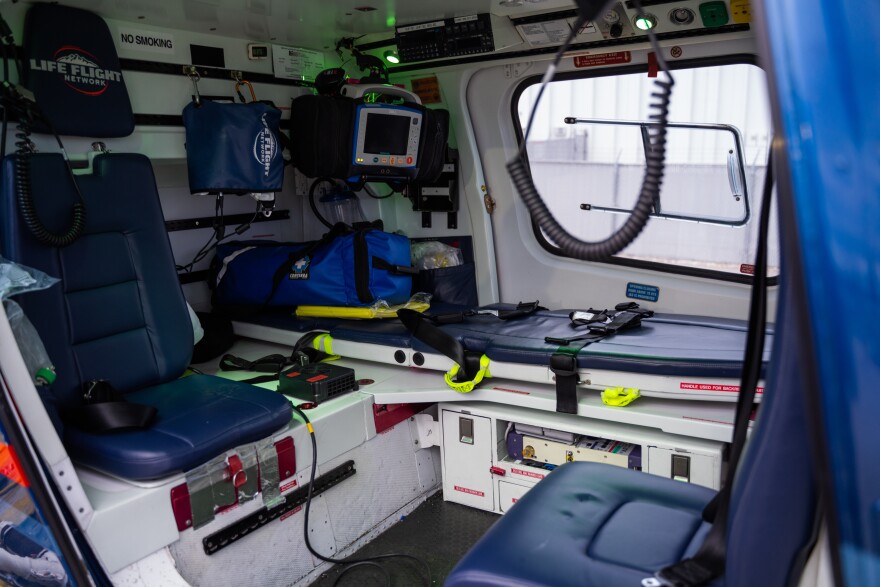It’s been more than 50 days since Idaho entered statewide crisis standards of care. While hospitals have been overwhelmed by the sheer number of critical COVID-19 patients on the ground, a team of specialized nurses has also been caring for them in the air.
At the base of the Life Flight Network in Boise, Jamie Hutt, a certified flight nurse, gives a tour of the inside of a chopper.
“It’s a very cramped version of a hospital room," she said.
A monitor beeps in the background. It shows a patient's heart rate, recordsthe blood pressure and monitors CO2 levels. It's the same device you might find in a hospital, but this one's packaged in a small, portable unit.

"You don't have all the extra hands and support around, so it's just you and your partner figuring out the best thing you can do for a patient with the more limited supplies you have," Hutt said. "And your supplies are not in a position where they're easily available. So you have to really think about what you need."
Life Flight Network, based in Oregon, operates medical transfer helicopters and planes throughout the Northwest. The nurses and pilots who work there have felt the waves of the pandemic come and go across the rural, mountainous region. Their job is to get patients where they need to go as fast and as safely as possible.
When hospitals on the ground are overwhelmed, the flight volumes goes up. During Idaho's latest peak in hospitalizations in September and October, the crews were taking about 25% more flights each day.
And when several facilities in the region are full or unable to accept more patients, the trips are longer, in order to bring patients farther away.
“California, Nevada, we’ve been to Colorado," said Heather Borron, another certified flight nurse.
Normally, hospitals are able to keep most of their referrals in-state, said Mike Weimer, a regional vice president for Life Flight based in the Treasure Valley.
"When we have to fly further distances away, it takes that aircraft out of the rural communities for longer periods of time," he said.

In a rural state like Idaho, with few specialized care hospitals, air medical transport plays an important role.
"People in rural communities who require critical care, and time-sensitive transport to those very few hospitals — the only way to accomplish that is by air medical," Weimer said.
Though the helicopters and planes are equipped for most emergency situations, taking COVID-19 patients longer distances can pose challenges.
“A lot of times these patients are breathing a lot faster, they’re requiring more percentages of oxygen," Borron said.
There's only a certain number of oxygen tanks that can safely be stored on the aircraft, according to FAA regulations. So it's not uncommon to need to make a stop on the way to reload.
Borron has been at this job for about five years. To do it, she said, you need to be an expert in multiple areas of medicine, like pediatrics and obstetrics.
“When you're flying, it's your pilot manning your ship, and your nurse and your paramedic in the back," she said. "So you really need to be competent in your skills and your abilities.”
The helicopter is like a flying ICU, Borron said. That means it can have more resources in the air than even some small, rural hospitals.
“They don't have the capabilities, a lot of times, because they're a small facility, and they don't have a Cath lab, or they don't have 'neuro,' or sometimes they don't have ICU.”
From the air, she’s seen the challenges rural states like Idaho face when the health care system is overwhelmed — by elevated patient levels, staffing challenges and the overall fatigue of health care workers.
Find reporter Rachel Cohen on Twitter @racheld_cohen
Copyright 2021 Boise State Public Radio




